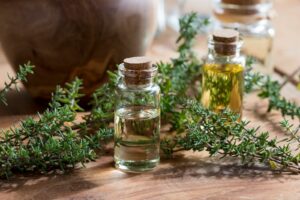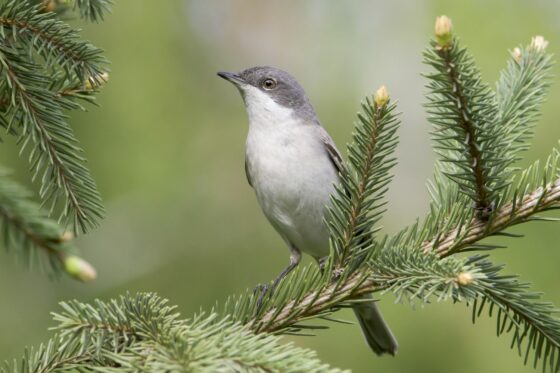Kestrel: facts & profile
How do peregrine falcons and kestrels differ? And what do birds of prey really eat? Here’s everything you should know about the kestrel.

At one time, the kestrel (Falco tinnunculus) was the most common bird of prey in the UK, but buzzards and sparrowhawks now claim this title. That said, seeing a kestrel in the UK is still not an uncommon occurrence. Kestrels are widespread in rural areas as well as cities, where they breed in tall, old buildings. You are most likely to spot a kestrel hunting, where it hovers in mid-air, demonstrating what is called a “shaking flight”. This technique involves the kestrel rapidly flapping its wings to generate lift but not propulsion as it searches in fields and meadows for prey. Read on to find out more about this fascinating bird of prey.
Contents
- Kestrel: key facts
- How to recognise the kestrel
- How to tell the difference between male and female kestrels
- How to tell the difference between kestrels and peregrine falcons
- How to recognise a kestrel egg
- How to recognise a young kestrel
- What is the perfect habitat for kestrels?
- Where do kestrels build their nests?
- Where do kestrels spend winter?
- What does a kestrel’s song sound like?
- What do kestrels eat?
- Help the kestrel!
Kestrel: key facts
| Size | 31-37cm |
| Weight | About 200g |
| Breeding season | April-May |
| Lifespan | Approximately 18 years |
| Habitat | Open and semi-open land, villages and cities |
| Food preferences | Voles, field mice and other small animals |
| Threats | Decline in natural habitat and food supply |
How to recognise the kestrel
The kestrel is about the size of a pigeon, but slimmer and more elegant. Its red-brown back and wings turn a black-grey at the wing tips, and then lighten at the breast and abdomen. Dark, bold spots are dotted across its body and wings. If you manage to get close enough, you may also notice the kestrel’s dark cheek stripes and yellow eye rings.
In air, the kestrel’s shaking flight and narrow wings distinguish it from a sparrowhawk. Kestrels have a wingspan of 75cm and reach speeds of up to 37mph.

How to tell the difference between male and female kestrels
As is so often the case, female kestrels are less colourful than their mates. A female kestrel’s plumage is heavily patterned and uniform brown, and lacks the male’s grey head and rump. On average, females are also slightly larger and heavier than males.

How to tell the difference between kestrels and peregrine falcons
At first glance, kestrels are often confused with the rarer peregrine falcon. To spot the difference, note the peregrine’s much darker upper body and head, and broad cheek stripes. And in adults, the peregrine’s belly is crossed with bands that distinguish it from the spotted kestrel.

How to recognise a kestrel egg
Kestrel eggs are about 4.5cm tall, yellow-brown and dotted with fine, dark speckles. Females lay between three and six eggs per clutch.

How to recognise a young kestrel
Young kestrels look similar to their mothers. They are brown and patterned, though not as clearly on the breast and belly as their parents, and their cheek stripes are indicated, but not yet pronounced. And for the male chicks, it will take some time for their grey head and rump to show.

What is the perfect habitat for kestrels?
Kestrels are found in a wide variety of habitats, but prefer land with meadows and pastures, in which to search for prey. Farms and mountainous regions will do, and they are happy in small and large towns, as long as there are enough open hunting grounds in the surrounding area.

Where do kestrels build their nests?
Kestrels do not build their own nests. In nature, they seek out rock crevices, tree hollows and abandoned crow nests, and in cities they occupy tall buildings, like church towers. Male kestrels locate a suitable breeding site, before attempting to attract a female to their nest with fresh prey.

Where do kestrels spend winter?
Kestrels only migrate in winter if they have to. Most will stay put, sometimes searching for food under thick snow, if it is available. However, scarce supplies lead many parts of the northern and westerly populations to move south. Kestrels also migrate to the UK from the Netherlands and Scandinavia over winter.

What does a kestrel’s song sound like?
The kestrel’s call consists of a series of rapid, sharp tones: “Kee-kee-kee-kee!” If you hear it: look up! There may be a bird flying overhead.
What do kestrels eat?
Kestrels feed on voles and mice, but are partial to other small animals such as lizards, songbirds, worms and insects. Usually, a kestrel will hover in mid-air, or perch from a high vantage point, to locate its prey, before swooping down and capturing it.

Help the kestrel!
Though not your typical garden visitor, kestrels in the UK do spend time in urban areas, and on occasion, visit domestic gardens. Read on to find out how you can support these elegant hunters.
Which birdhouses are suitable for kestrels?
Kestrels are happy to use birdhouses. However, they need to be big enough. The floor should be 30 x 50cm, and the front-facing entrance 25 x 30cm. A place to perch at the entrance is also a welcome addition for kestrels who are rearing their young.
Note: place your birdhouse as high as possible and preferably mounted on a smooth, horizontal wall. Kestrels avoid birdhouses that have vertical surfaces near or below them, as they pose a point of attack.

How can I support kestrels even more?
While a suitable nesting box will go a long way, kestrels need to hunt. The best place for them to do that is over cultivated land. Like many other species, kestrels are struggling with an increasing loss of structure and diversity in their hunting grounds, so if you can, support the protection of the natural environment.
Redstarts, nuthatches and jackdaws will also appreciate a garden nesting box. Read our article on building your own bird box for invaluable tips on birdhouse materials, design, cleaning and location.

























